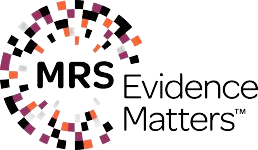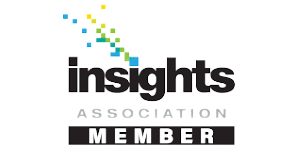Report Overview
- Understand the latest market trends and future growth opportunities for the Neurology Devices industry globally with research from the Global Industry Reports team of in-country analysts – experts by industry and geographic specialization.
- Key trends are clearly and succinctly summarized alongside the most current research data available. Understand and assess competitive threats and plan corporate strategy with our qualitative analysis, insight, and confident growth projections.
- The report will cover the overall analysis and insights in relation to the size and growth rate of the “Global Neurology Devices Market” by various segments at a global and regional level for the 2010-2027 period, with 2010-2021 as historical data, 2021 as a base year, 2022 as an estimated year and 2022-2027 as forecast period.
- The full report suite for neurological devices includes cerebrospinal fluid management, detachable coils, liquid embolics, neurovascular catheters, neurovascular guidewires, neurovascular stents, balloon occlusion devices, aneurysm clips, neurovascular thrombus management, neuromodulation devices, intrathecal pumps, stereotactic devices, neuroendoscopes and ultrasonic aspirators.
Description:
- In the changed post COVID-19 business landscape, the global market for Neurology Devices estimated at US$11.2 Billion in the year 2021, is projected to reach a revised size of US$15.3 Billion by 2027, growing at a CAGR of 5.8% over the analysis period 2020-2027.
- Cerebrospinal Fluid Management, one of the segments analyzed in the report, is projected to record a 5.7% CAGR and reach US$5.8 Billion by the end of the analysis period. Taking into account the ongoing post pandemic recovery, growth in the Neurostimulation segment is readjusted to a revised 6.7% CAGR for the next 7-year period.
- The Neurology Devices market in the U.S. is estimated at US$2.8 Billion in the year 2020. China, the world`s second largest economy, is forecast to reach a projected market size of US$3.3 Billion by the year 2027 trailing a CAGR of 10% over the analysis period 2020 to 2027. Among the other noteworthy geographic markets are Japan and Canada, each forecast to grow at 2.5% and 5.8% respectively over the 2020-2027 period. Within Europe, Germany is forecast to grow at approximately 3.1% CAGR. Led by countries such as Australia, India, and South Korea, the market in Asia-Pacific is forecast to reach US$2 Billion by the year 2027.
- In the global Interventional Neurology segment, USA, Canada, Japan, China and Europe will drive the 6% CAGR estimated for this segment. These regional markets accounting for a combined market size of US$1.4 Billion in the year 2020 will reach a projected size of US$2 Billion by the close of the analysis period. China will remain among the fastest growing in this cluster of regional markets. Latin America will expand at a 7.4% CAGR through the analysis period.

MARKET DATA INCLUDED
- Unit Sales, Average Selling Prices, Market Size & Growth Trends
- Procedure Numbers
- COVID-19 Impact Analysis
- Market Drivers & Limiters
- Market Forecasts Until 2027, and Historical Data to 2015
- Recent Mergers & Acquisitions
- Company Profiles and Product Portfolios
- Leading Competitors
The Neurology Devices Report Includes:
- The report provides a deep dive into details of the industry including definitions, classifications, and industry chain structure.
- Analysis of key supply-side and demand trends.
- Detailed segmentation of international and local products.
- Historic volume and value sizes, company, and brand market shares.
- Five-year forecasts of market trends and market growth.
- Robust and transparent research methodology conducted in-country.
- Qualitative and quantitative analysis of the market based on segmentation involving both economic as well as non-economic factors.
- Provision of market value (USD Billion) data for each segment and sub-segment.
- Analysis by geography, region, Country, and its states.
- A brief overview of the commercial potential of products, technologies, and applications.
- Company profiles of leading market participants dealing in products category.
- Description of properties and manufacturing processes.
- marketed segments on the basis of type, application, end users, region, and others.
- Discussion of the current state, setbacks, innovations, and future needs of the market.
- Examination of the market by application and by product sizes; utility-scale, medium scale and small-scale.
- Country-specific data and analysis for the United States, Russia, China, Germany, United Kingdom, France, Japan, Israel, Saudi Arabia, South Korea, United Arab Emirates, Canada, Switzerland, Australia, India, Italy, Turkey, Qatar, Sweden, Spain, Belgium, Netherlands, Norway, Singapore, Egypt, Denmark, Austria, Vietnam, Brazil, Argentina, Mexico, South Africa, and others.
- Coverage of historical overview, key industrial development and regulatory framework.
- Analysis of competitive developments, such as contracts & agreements, expansions, new product developments, and mergers & acquisitions in the market.
- A look at the opportunities in the market for stakeholders and provide a competitive landscape of the market leaders.
Reports Scope and Segments:
| Report Attribute | Details |
| Market size value in 2021 | USD 11.2 billion |
| Revenue forecast in 2027 | USD 15.3 billion |
| Growth Rate | CAGR of 12.73% from 2022 to 2027 |
| Base year for estimation | 2021 |
| Historical data | 2015 – 2021 |
| Forecast period | 2022 – 2027 |
| Quantitative units | Revenue in USD million and CAGR from 2021 to 2027 |
| Report coverage | Revenue forecast, company ranking, competitive landscape, growth factors, trends, DROT Analysis, Market Dynamics and Challenges, and Strategic Growth Initiatives COVID-19 Impact, Market Growth Trends, Market Limiters, Competitive Analysis & SWOT for Top Competitors, Mergers & Acquisitions, Company Profiles, Product Portfolios, Disease Overviews. Procedure Numbers, Market Size, Market Shares, Market Forecasts, Market Growth Rates, Units Sold, and Average Selling Prices. |
| Segments covered | Technology, Device Type (Cerebrospinal Fluid Management, Neurostimulation, Interventional Neurology, Neurosurgery, Other Device Types), End-Use (Hospitals, Ambulatory Surgery Centers, Other End-Uses), Application, Region |
| Regional scope | North America; Europe; Asia Pacific; Latin America; Middle East and Africa and rest of the world |
| Country scope | United States, Russia, China, Germany, United Kingdom, France, Japan, Israel, Saudi Arabia, South Korea, United Arab Emirates, Canada, Switzerland, Australia, India, Italy, Turkey, Qatar, Sweden, Spain, Belgium, Netherlands, Norway, Singapore, Egypt, Denmark, Austria, Vietnam, Brazil, Argentina, Mexico, South Africa, and others. |
| Key companies profiled | Abbott Laboratories, Inc.; B. Braun Melsungen AG; Boston Scientific Corporation; Johnson & Johnson; Medtronic, Inc.; MicroPort Scientific Corporation; Nihon Kohden Corporation; Penumbra, Inc.; Smith & Nephew PLC; Stryker Corporation; L. Gore & Associates; Jude Medical Inc.; Integra LifeSciences Holdings; Esaote; Rapid Medical; Acandis GmbH; LivaNova; Nevro; MicroVention; Cerenovus; Axonics; Brainlab; NeuroPace; Aesculap; Mizuho; Q’apel Medical; Elekta; Karl Storz and others |
| Customization scope | Free report customization (equivalent up to 10 analyst’s working days) with purchase. Addition or alteration to country, regional & segment scope. |
| Report Format | PDF, PPT, Excel & Online User Account |
Neurology Devices by Category
By Product
- Neurosurgery Devices
- Interventional Neurology
- Filter Devices
- Neuro Thrombectomy
- Stenting and Cerebral Balloon Angioplasty
- Embolization
- Aneurysm Coiling
- Neurostimulation
- Deep Brain Stimulation Devices
- Vagus Nerve Stimulation
- Sacral Nerve Stimulation
- Gastric Electric Stimulation
- Spinal Cord Stimulation Devices
- CSF Management
- CSF Drainage
- CSF Shunts
By Disease Pathology
- Cerebral Aneurysms
- Fistulas and Arteriovenous Malformations
- Ischemic Strokes
- Carotid Artery Stenosis
- Others
By End-User
- Specialty Center
- Clinics and Hospitals
U.S. Neurological Device Market Insights
U.S. neurological device market Neuromodulation devices comprise the largest segment for neurological devices, divided between several competitors in the spinal cord stimulation and deep brain stimulation space. Most other segments, including vagus nerve stimulation, gastric electric stimulation, dorsal root ganglion stimulation and responsive neurostimulation, remain monopolized market segments at the time of publication.
U.S. Neurological Device Market Share Insights
U.S. neurological device market shares Medtronic has maintained its leading position in the neurological device market, but growing competition has broken several of its monopolies across the market. Across the company’s vast product catalogue, it now only maintains a monopoly in the gastric electric stimulation market, with new competition working through the FDA approval process. In the liquid embolic, intrathecal pump and stereotactic device markets, Medtronic still holds more than half of the market share.
Market Segemntation Summary
- Cerebrospinal Fluid Management Market
- Detachable Coils Market
- Liquid Embolics Market
- Neurovascular Catheters Market
- Neurovascular Guidewires Market
- Neurovascular Catheter Market
- Neurovascular Stents Market
- Balloon Occlusion Device Market
- Aneurysm Clips Market
- Neurovascular Thrombus Management Market
- Neuromodulation Devices Market
- Intrathecal Pumps Market
- Stereotactic Devices Market
- Neuroendoscope Market
- Ultrasonic Aspirators Market
Key Market Players
Abbott Laboratories, Inc.; B. Braun Melsungen AG; Boston Scientific Corporation; Johnson & Johnson; Medtronic, Inc.; MicroPort Scientific Corporation; Nihon Kohden Corporation; Penumbra, Inc.; Smith & Nephew PLC; Stryker Corporation; L. Gore & Associates; Jude Medical Inc.; Integra LifeSciences Holdings; Esaote; Rapid Medical; Acandis GmbH; LivaNova; Nevro; MicroVention; Cerenovus; Axonics; Brainlab; NeuroPace; Aesculap; Mizuho; Q’apel Medical; Elekta; Karl Storz and others.
Recent Developments
- Johnson and Johnson in 2021 announced the launch of a new product called Cerenovus Stroke Solutions. It comprises three devices to help in procedures of clot removal.
- Pehnox in 2021 announced the establishment of the new entity to improve its business withhold in Europe.
After Sales Support
- Every updated edition of the report and full data stack will be provided at no extra cost for 24 months.
- Latest 2021 base year report.
- No user limitation for the report. Unlimited access within the organization.
- Unrestricted post-sales support at no additional cost
- Free report customization (equivalent up to 10 analyst’s working days) with purchase. Addition or alteration to country, regional & segment scope
- Global Industry Reports will support your post-purchase for a period of 24 months to answer any of your queries related to the following market and to provide you any more data needed, for your analysis.
- Option to purchase regional or some selected Chapters from the report.









